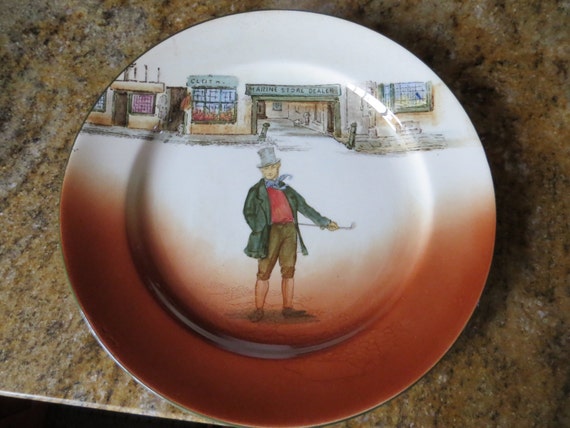

Had Dickens simply put this satire into a stand-alone work, it might have been quite good. The message: America is a land of slave-owners, swindlers, and saps. It is nothing more than a chance for Dickens to vent his spleen a bit. Indeed, the American section would be better ripped out and published separately. You could rip this whole section out and there would be no break in the story. There is absolutely nothing in this entire journey that advances the plot of the novel in any way whatsoever. They go to America, meet some Americans, and then come home. This journey occupies three (non-sequential) installments.

Suddenly, for no apparent reason in the middle of the long meandering first part, young Martin Chuzzlewit and Mark Tapley head off to America. The likely reason that nobody else is splitting the novel in two as I have done here is that there is another split which is even more obvious and which takes up all the air in the room in discussions of this novel. Then I looked at the dates and much to my shock, the story took on its charm at the very time when A Christmas Carol showed up. In the midst of writing Martin Chuzzlewit, Dickens also wrote A Christmas Carol. Naturally enough I got to puzzling over why the novel suddenly became good, but while my cursory search of the matter did not turn up anyone talking about this (for reasons which will be discussed anon), I did find a remarkable coincidence, which may in fact be explanatory. It even has one of those marvelous endings which Serious Literary Critics™ hate, but I absolutely adore, when we suddenly find out that one of the characters who seemed so mean was really just pretending all along and is actually a good guy! Pecksniff became fully Pecksniffian, a bombastic smarmy, manipulative conniving man whose every speech is so over-the top you can’t help but laugh at the wonder of it all. Jonas Chuzzlewit turned from dull mean guy into a villain right up there with Bill Sykes. Here I was dutifully picking up the book again to read another 40 pages without anticipation that it was going to be a pleasant hour, and suddenly, I found myself immersed in a world of joy. This break in the quality of the novel was quite jarring. Gamp, Tom Pinch, Mark Tapley all become those perfect Dickens caricatures who reveal more about humanity than you would think could be possible.

Best of all, characters who had potential realize their potential. The good people live happily ever after the villains meet their just ends. Through an improbable set of coincidences, the good people win out in the end. The plot jerks into motion with dastardly villains doing evil things to good people.
#Mark taply full#
The characters become Dickens characters, alive and full of irrepressible charm. Then quite suddenly, the novel shifts into something wonderful. A few of the characters rise to the level of potentially interesting, but, even those characters have nothing to do and get lost in the general malaise of a novel heading nowhere. Then new characters come along and also do nothing. Characters are introduced and then meander around doing little to nothing. The first half of the novel was an awful slog. Returning to Chuzzlewit: the first big break in the book comes around the halfway point. Moreover, the installment breaks themselves are really interesting to notice, something which is totally lost in plowing through the book all at once. One section at a time is a rather short bit of reading, and the next thing you know, you are done with the book. My advice: read Dickens in those installments. With the handy aid of Wikipedia, you can find the original installment break points. Remember, the novels were originally published in installments when the installments were collected into a single volume, the break points were eliminated. The novels really aren’t as long as they seem when they are sitting on the bookshelf. First, an aside: the sheer length of the typical Dickens book prevents many people from starting one. The whole work is a little over 800 pages long. Well, really two novels and a short story. The subtitle of Martin Chuzzlewit could be A Tale of Two Novels. Is it really that awful? A complicated question, that.


 0 kommentar(er)
0 kommentar(er)
